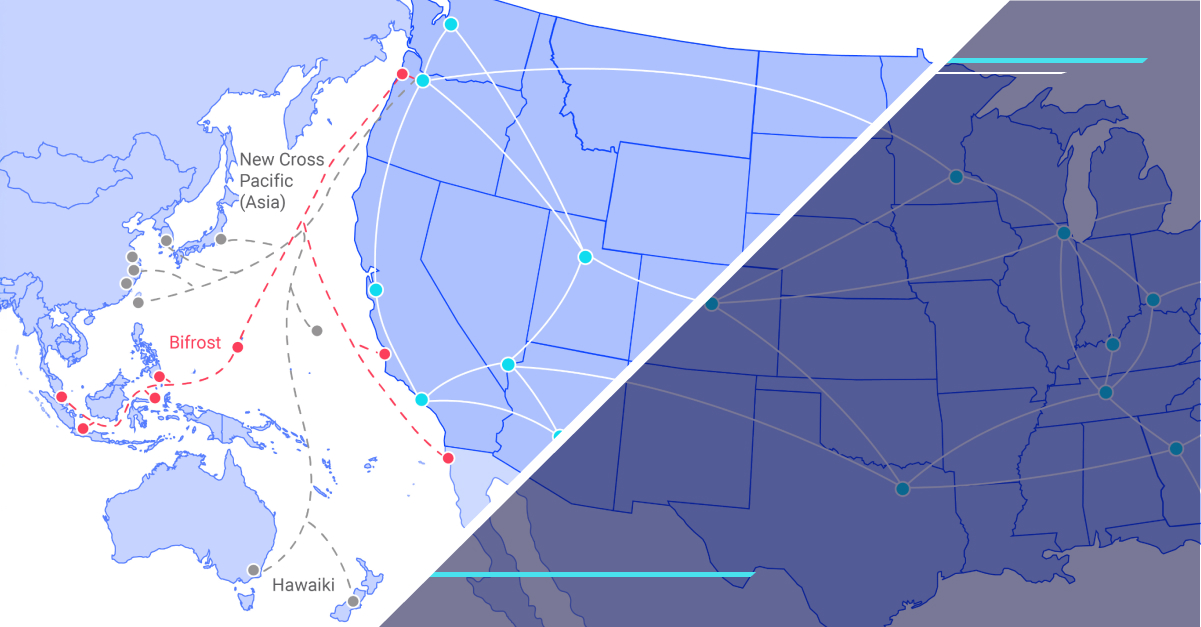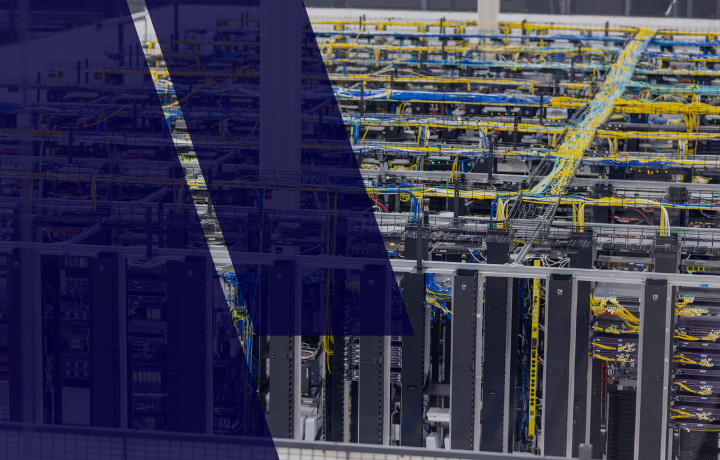Effective data center site selection: 10 key considerations
Data center site selection is a critical decision that impacts performance, reliability, and operational costs. Each site presents its own advantages and challenges.

A region with abundant renewable energy may come at a higher price, while urban markets often deliver superior connectivity but limited expansion potential. The best locations balance operational reliability, scalability, and sustainability to meet business goals today while preparing for future growth.
Here, we'll cover the essential considerations for effective site selection, helping you evaluate factors such as infrastructure, scalability, compliance, and proximity to end-users.
What are the key considerations when selecting data center sites?
Effective data center site selection is founded on understanding your unique operational needs.
Key data center requirements for effective operations
- Define operational requirements and infrastructure needs
Start by identifying the services your business requires, whether it's cloud services, data storage, or server hosting, and quantify the cabinet counts and network equipment necessary to support your data center operations. A clear picture of your infrastructure needs ensures the data center facility you choose can handle current demands and scale for future growth.
- Evaluate location stability, power reliability, and space availability
Critical factors such as location, power availability, and available space play a pivotal role in the site selection process. A geographically stable data center location with a reliable power grid and ample room for equipment supports uninterrupted operations and ensures long-term flexibility.
- Align site selection with business strategy
Your data center should support your broader objectives. For example, organizations focused on high availability may require redundant power sources and advanced data center cooling systems to maintain uptime. Meanwhile, businesses emphasizing scalability should evaluate a data center design that can expand without disrupting operations or incurring excessive costs.
- Plan for scalability and redundancy
Future-ready facilities can expand without costly downtime. Consider modular design, dual power feeds, and backup systems that maintain performance under load. As workloads grow, scalable infrastructure ensures smooth upgrades and continuous availability.
- Optimize for efficiency and performance
Efficiency reduces long-term costs and environmental impact. Prioritize high-density configurations, energy-efficient cooling systems, and readiness for AI and high-performance computing. These features lower operational costs while improving reliability.
- Assess the regulatory environment and permitting speed
Review local regulations, zoning requirements, and permitting timelines. Some regions offer tax incentives or streamlined approval processes that can lower costs and speed up deployment.
- Review climate impact and sustainability incentives
Evaluate access to renewable energy, cooling efficiency in the local climate, and government or utility programs that reward sustainability. Sites that align with your energy strategy support long-term cost control and environmental goals.
- Confirm access to skilled workforce and local expertise
Availability of experienced technicians, engineers, and support staff is critical for ongoing operations. Proximity to a strong talent pool simplifies staffing and maintenance planning.
- Analyze proximity to customers and connectivity hubs
Locations near users, cloud providers, and network exchanges reduce latency and improve application performance. Proximity to major fiber routes and carrier hotels also enhances redundancy and interconnection options.
- Evaluate total cost of ownership
Consider the full cost of operations, including real estate, energy, taxes, and staffing. A site with low upfront costs may be more expensive to maintain, so analyze long-term financial impact before making a final decision.
For insights into aligning data center design with your strategy, refer to the Flexential Data Center Design & Architecture Overview.
Evaluating infrastructure and connectivity
Strong infrastructure and dependable connectivity are the foundation of every high-performing data center site selection strategy. Power, cooling, and network interconnection determine not only uptime and speed but also long-term efficiency and cost control.
Reliable infrastructure for seamless operations
A well-built infrastructure ensures your data center can support consistent, high-speed performance across all workloads. Look for facilities with diverse fiber routes and redundant network paths to maintain uptime during maintenance or provider outages. AI- and high-density-ready environments are increasingly valuable as rack densities rise and cooling demands increase.
The role of power availability in data center success
Power reliability remains one of the most important factors in facility planning. Evaluate each region's grid stability, proximity to substations, and access to renewable energy. A strong and redundant power supply ensures availability during high demand or grid disruptions.
Energy efficiency also matters. Facilities using advanced liquid or hybrid cooling systems can support higher rack densities while lowering total energy costs. This combination of reliability and efficiency is essential for organizations running intensive workloads such as AI and analytics.
Why carrier-neutral data centers matter
Carrier-neutral data centers provide an edge in performance and cost efficiency. These facilities give businesses access to multiple network providers, allowing for customized solutions that fit specific needs. With diverse carrier options, you can achieve better redundancy, optimize costs, and improve overall reliability. To understand the benefits of carrier-neutral data centers, explore Flexential Interconnection Services.
The importance of interconnectivity
Don't overlook interconnectivity. A well-connected data center should seamlessly link to other locations to support redundancy and disaster recovery efforts. Sites with strong interconnection capabilities can better handle power outages or natural disasters, ensuring your business-critical data remains accessible and secure.
Assessing geographic and environmental factors
Geographic and environmental conditions can make or break site performance. A strong site minimizes risk, optimizes energy use, and provides access to the resources needed for long-term growth.
Geographic stability and natural disasters
Geographic stability is one of the most critical factors in determining a site’s resilience. Regions with a low risk of earthquakes, hurricanes, and flooding provide greater protection against downtime and physical damage. Reliable transportation routes and proximity to emergency services also contribute to operational continuity during unexpected events.
A stable location supports both uptime and long-term sustainability. When combined with a reliable power grid and sound infrastructure design, it allows your facility to operate continuously even under stress. Organizations looking to strengthen disaster preparedness can find additional insights in Flexential’s disaster recovery resources.
Climate and weather conditions
Climate plays a direct role in power consumption and cooling efficiency. Cooler, temperate climates typically reduce energy demand, while extreme heat or humidity can drive up cooling costs and limit density. Facilities built with energy-efficient systems, such as advanced liquid cooling, can offset these challenges and maintain optimal operating conditions year-round.
Many regions also offer renewable energy programs or sustainability incentives that can help lower operating costs. Considering these environmental and policy advantages early in the site selection process supports both performance and long-term efficiency.
Proximity to fiber networks and internet exchange points
Access to fiber networks and internet exchange points is essential for maintaining low latency and high network reliability. Sites located near dense connectivity hubs deliver faster data transmission, which benefits real-time applications, hybrid cloud workloads, and customer-facing services.
Facilities that integrate directly into these networks, like Flexential data centers, can scale bandwidth and capacity quickly without compromising performance or reliability.
Availability of land and resources for expansion
Future growth depends on having both the physical space and the supporting infrastructure to expand. Evaluate available land, regional construction capacity, and access to additional power and cooling resources. A site with room to grow enables you to add equipment, deploy higher-density configurations, and adapt to evolving technology without costly relocations.
Prioritizing security and compliance
The right facility protects critical infrastructure from physical and digital threats while meeting industry and regulatory requirements for data protection.
Physical security measures
Layered physical security protects both the facility and the sensitive systems inside. Look for 24/7 surveillance, biometric access controls, and on-site security personnel to prevent unauthorized entry. Reinforced walls, mantraps, and restricted access zones add further protection against breaches.
These safeguards should extend throughout the facility’s design and operations. All Flexential data centers incorporate multi-layered physical security to safeguard equipment, data, and staff while maintaining continuous uptime.
Network and data security
A resilient network architecture is just as important as physical protection. Evaluate how each facility manages firewalls, intrusion detection, and encryption protocols to defend against cyberattacks. Continuous monitoring, carrier diversity, and secure network segmentation reduce exposure and keep systems compliant with modern security standards.
For hybrid IT environments, consistent protection across colocation and cloud workloads is critical. Integrated security controls and visibility across platforms ensure sensitive data remains secure wherever it resides.
Ensuring compliance with standards
Every data center should maintain certifications that align with your operational and regulatory needs. Look for compliance with frameworks such as HIPAA, PCI DSS, SOC 2, ISO 27001, and GDPR to confirm proper data handling and security controls. Transparent reporting and a proven audit history demonstrate maturity and reliability in ongoing operations.
Comprehensive compliance also includes strong redundancy and recovery measures, ensuring business continuity during power or network disruptions. Facilities that pair rigorous security with documented compliance provide greater confidence in long-term operational resilience.
Considering scalability and future growth
Long-term success depends on choosing a site that can grow with your business. Evaluate how quickly you can add capacity, increase power density, and expand interconnection without disrupting operations.
Planning for long-term growth
A facility that can grow alongside your business ensures you're prepared for evolving demands without costly overhauls or relocations. Look for data centers that offer flexible infrastructure, additional cabinet space, and scalable power availability to accommodate future growth seamlessly.
The rise of AI and high-density workloads has transformed data center planning. Modern facilities must support higher power densities, advanced cooling solutions, and infrastructure designed to handle intensive computational demands. Organizations planning for AI deployments should evaluate sites with the capacity to support these next-generation requirements. For more insights on preparing for AI workloads, explore our resources on navigating AI data center trends and understanding AI data center infrastructure.
Staffing considerations and skilled labor
Growth plans depend on access to skilled people. Prioritize regions with a strong pool of data center technicians, network engineers, and facility operators. Confirm 24x7 coverage, on-site or near-site support, and clear escalation paths. Availability of remote hands, vendor ecosystems, and training pipelines reduces risk as footprints and technologies expand.
Balancing costs and expansion potential
Operating costs also play a significant role in planning for the future. Efficient design, such as energy-optimized cooling systems and renewable power sources, can help lower costs while maintaining performance. Evaluating these potential savings ensures your data center facility remains both effective and financially sustainable.
Think about expansion potential. A potential site with ample land and resources provides the flexibility to scale as your business grows. Whether adding server capacity or upgrading equipment, selecting a new data center location that offers room to expand can save time and reduce disruption down the road.
Flexential’s approach to data center site selection
Here’s how we design and choose sites so your infrastructure stays fast, reliable, and ready to grow.
- National footprint where it matters: 40+ facilities in 19 strategic U.S. markets for performance, proximity, and resilience.
- Carrier-neutral and cloud-ready: Direct access to hundreds of carriers and major cloud on-ramps for low latency, choice, and cost control.
- High-density and AI-ready: Power delivery and advanced cooling built for GPU workloads and higher rack densities, so you can scale compute without rework.
- Engineered for uptime: Redundant power paths, diverse fiber routes, and layered physical security to protect availability around the clock.
- Built to scale: Modular layouts, flexible power blocks, and clear expansion pathways that let you add capacity without disruption.
- Strategic placement: Sites selected to minimize latency, reduce geographic risk, and support compliance and data-sovereignty needs.
Want to see how this looks in practice? Book a tour and we’ll walk you through the design, interconnection options, and growth plans for the markets that fit your strategy.
Effective data center site selection is about more than geography. It’s about building a foundation for performance, resilience, and growth. The strongest decisions balance power availability, interconnection, security, and scalability with environmental stability and total cost of ownership.
To continue refining your strategy, explore our insights on data center best practices and review data center compliance standards to ensure every decision supports long-term reliability and regulatory confidence.
FAQs
What are the most important factors in data center site selection?
The key factors are power reliability, network connectivity, geographic stability, and room for growth. The right site offers dependable utilities, access to multiple carriers, and a location that minimizes natural disaster risk. Proximity to customers or network hubs also plays a major role in performance.
How do power and connectivity influence site decisions?
Power and connectivity determine how consistently a data center can deliver services. Facilities with redundant power paths, diverse fiber routes, and access to major internet exchanges ensure low latency and continuous uptime. Strong interconnection options also make it easier to integrate with hybrid and multi-cloud environments.
What environmental or geographic risks should be evaluated?
Floods, earthquakes, extreme weather, and other natural hazards can all disrupt operations. Evaluating a region’s climate, soil stability, and access to emergency services helps reduce downtime and protect your infrastructure investment.
How are AI and high-density workloads impacting modern data center planning?
AI and GPU-driven workloads are reshaping how facilities are designed. Higher rack densities require greater power capacity and advanced cooling methods, such as liquid or hybrid systems. Sites that can support these loads efficiently provide a long-term advantage as technology demands grow.
What incentives or local factors can affect total cost of ownership (TCO)?
Total cost of ownership depends on more than construction or lease rates. Energy pricing, local tax incentives, permitting speed, and renewable energy programs all influence long-term economics. Evaluating these regional factors early helps organizations control costs as they scale.





